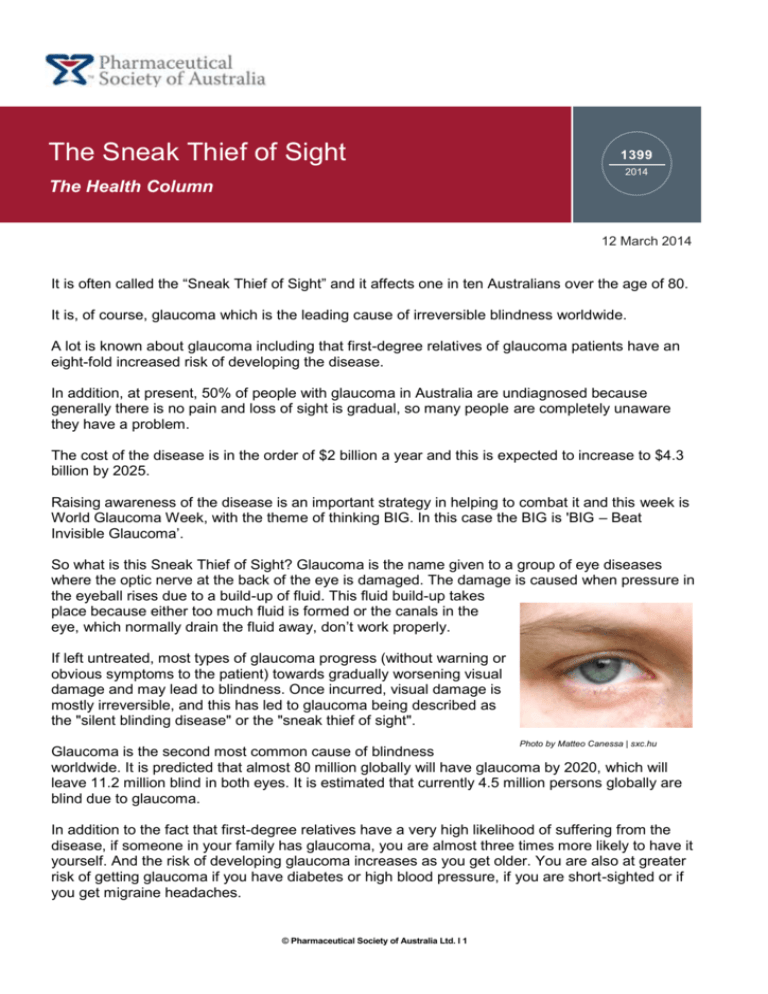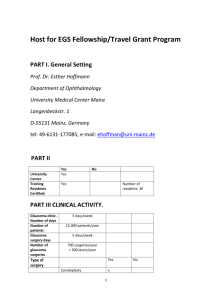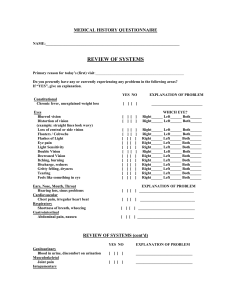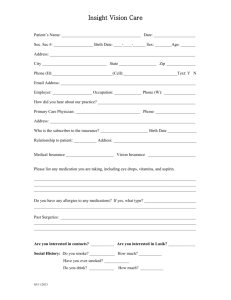Sneak Thief of Sight - Pharmaceutical Society of Australia
advertisement

The Sneak Thief of Sight 1399 2014 The Health Column 12 March 2014 It is often called the “Sneak Thief of Sight” and it affects one in ten Australians over the age of 80. It is, of course, glaucoma which is the leading cause of irreversible blindness worldwide. A lot is known about glaucoma including that first-degree relatives of glaucoma patients have an eight-fold increased risk of developing the disease. In addition, at present, 50% of people with glaucoma in Australia are undiagnosed because generally there is no pain and loss of sight is gradual, so many people are completely unaware they have a problem. The cost of the disease is in the order of $2 billion a year and this is expected to increase to $4.3 billion by 2025. Raising awareness of the disease is an important strategy in helping to combat it and this week is World Glaucoma Week, with the theme of thinking BIG. In this case the BIG is 'BIG – Beat Invisible Glaucoma’. So what is this Sneak Thief of Sight? Glaucoma is the name given to a group of eye diseases where the optic nerve at the back of the eye is damaged. The damage is caused when pressure in the eyeball rises due to a build-up of fluid. This fluid build-up takes place because either too much fluid is formed or the canals in the eye, which normally drain the fluid away, don’t work properly. If left untreated, most types of glaucoma progress (without warning or obvious symptoms to the patient) towards gradually worsening visual damage and may lead to blindness. Once incurred, visual damage is mostly irreversible, and this has led to glaucoma being described as the "silent blinding disease" or the "sneak thief of sight". Photo by Matteo Canessa | sxc.hu Glaucoma is the second most common cause of blindness worldwide. It is predicted that almost 80 million globally will have glaucoma by 2020, which will leave 11.2 million blind in both eyes. It is estimated that currently 4.5 million persons globally are blind due to glaucoma. In addition to the fact that first-degree relatives have a very high likelihood of suffering from the disease, if someone in your family has glaucoma, you are almost three times more likely to have it yourself. And the risk of developing glaucoma increases as you get older. You are also at greater risk of getting glaucoma if you have diabetes or high blood pressure, if you are short-sighted or if you get migraine headaches. © Pharmaceutical Society of Australia Ltd. I 1 In the early stages of glaucoma, most people experience no symptoms, even when losing their sight. Nevertheless, there are sometimes warning signs. Some people may notice a need to change their glasses more often, perhaps find it hard to see in dark rooms, lose wide vision, or have blurred sight. Unfortunately, glaucoma can’t be cured but the serious consequences of glaucoma can be prevented if the condition is discovered soon enough; and early treatment, usually with eye drops to stabilise the pressure in the eye, can help avoid further loss of sight. Glaucoma can be detected in a number of ways. An eye specialist or optometrist can measure the pressure of the fluid in your eye and the nerves and blood vessels in your eye can be checked for damage. In addition, your fields of vision can be tested for blind spots or sight loss. Importantly, it has been estimated that more than 10% of visual loss from glaucoma is because the prescribed eye drops are not used properly. Whether this is due to occasional forgetfulness or a deliberate or accidental failure to follow the doctor’s directions, the unfortunate result is the same. So, check with your pharmacist that you’re using you eye drops to the best advantage. Advice about glaucoma though the Glaucoma and Vision impairment fact cards which available at pharmacies around Australia providing the “Self Care” health information. For the nearest location phone the Pharmaceutical Society on 1300 369 772 or log onto the website www.psa.org.au and click on Self Care and then Find a Self Care Pharmacy. © Pharmaceutical Society of Australia Ltd. I 2






